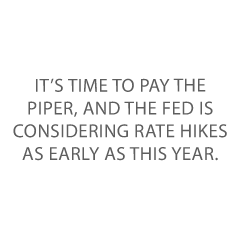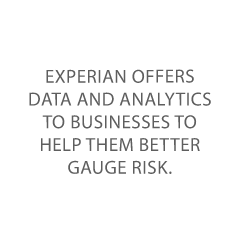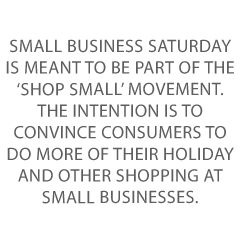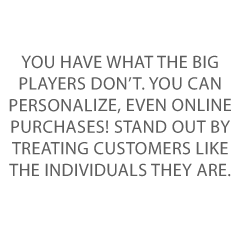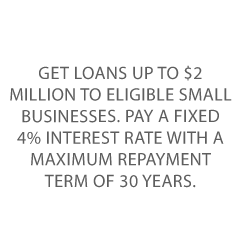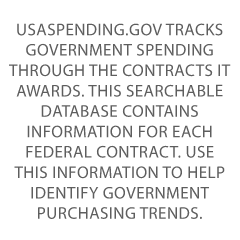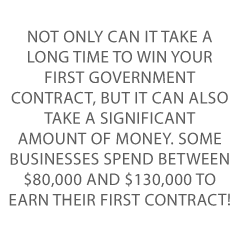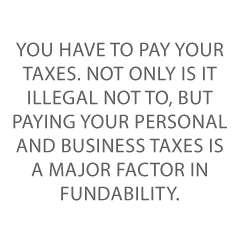What is a 2021 Credit Review and Why Should You Do One?
In a time when the economy is tumbling toward a recession, it’s important for small businesses to get their finances in order. Here are tips on how to do that by doing a 2021 credit review.
Also, we’ll show you how this can give your business an advantage over competitors who are not aware of what they’re missing out on. And why financial experts recommend this type of review. So look at the 5 ways a 2021 credit review can help your business. Get more information about what you need to do now so you don’t have any regrets later!
All year, we’ve been talking about building business credit. And we’ve talked about business credit reporting agencies and their reports. But do you know how to read your business credit reports? And do you know what to do with the information you might find?
The Benefits of Doing a 2021 Credit Review
Knowing what’s in your business credit reports can only help you. Learning what the CRAs are scoring you on will help focus your efforts. For example, if on-time payments matter to a CRA more than utilization percentage, then wouldn’t it be a good idea to concentrate on paying your credit bills on time? <Spoiler alert> they do.
Why it is Important for You to Know About Your Business Credit Scores
Business credit is an actual asset, and it is worth money! That means you can factor business credit into the cost of your business, should you ever decide to sell. Plus, what you do to build business credit will often help you build a clientele!
Better business credit scores will help you get business financing. They will help you get better financing, with lower interest rates and payback terms. For some entrepreneurs, better business credit scores are the difference between getting some financing….
Or none.
What Information Should be Included in Your Review
You want to be looking at your actual, full business credit reports, which are more than the scores. It’s time to look at the details. These should be reports from:
- Dun & Bradstreet
- Experian and
- Equifax
About the Process
Get your D&B business credit report by signing into the D&B website. You want their CreditMonitor product, which shows the most scores. Get your Experian credit report by running a search for your business. You want their CreditScoreSM Report. To get your Equifax business credit report, you’ll need to contact them. Specify that you want a single Equifax business credit report.
product, which shows the most scores. Get your Experian credit report by running a search for your business. You want their CreditScoreSM Report. To get your Equifax business credit report, you’ll need to contact them. Specify that you want a single Equifax business credit report.
How to Get Started with a 2021 Credit Review Now
If a highly detailed report isn’t in the budget right now, at least a shorter summary report will keep you informed. And it will get you in the habit of checking your credit reports. Today, we’ll look at high level information. This is what you absolutely need to know right now.
#5 Way a 2021 Credit Review Can Benefit Small Businesses: Get to Know Your Dun & Bradstreet Business Credit Report
It always makes sense to start with D&B. They are the biggest business CRA in the world, by far! You need a D-U-N-S number to start building business credit. If you don’t have a D-U-N-S number, you’ll need to get one; they’re free. This number gets your business into their system.
But your business will not get a PAYDEX score, unless there are at least 3 trade lines reporting, and a D-U-N-S number. Your business must have BOTH to get a D&B score or report.
D&B Data
D&B’s database contains hundreds of millions of companies around the world, both active and out of business. So D&B lists over a billion trade experiences. It works to improve its analyses to assure the greatest degree of accuracy possible. To ensure as accurate a report as possible, give D&B your company’s current financial statements.
Predictive Models and Scoring
D&B takes historical information to try to predict future outcomes. This is to identify the risks inherent in a future decision. They take objective and statistically derived data, rather than subjective and intuitive judgments. There are sample reports online available on the D&B website.
D&B Reports
D&B offers database-generated reports. These help their clients decide if your business is a good credit risk. Companies use the reports to make informed business credit decisions and avoid bad debt. Several factors go into creating such a report.
In general when D&B does not have all the information that they need, they will show as much in their reports. But missing information does not necessarily mean your company is a poor credit risk. Instead, the risk is unknown.
Executive Summary
The report starts with basic company information, like:
- Number of employees
- Year your business was started
- Net worth
- Sales
D&B Rating
This rating helps companies check your business’s size and composite credit appraisal. Dun & Bradstreet bases this rating on data in your company’s interim or fiscal balance sheet plus an overall evaluation of your business’s creditworthiness. The scale runs 5A—HH. Rating Classifications show your company size based on worth or equity. D&B assigns such a rating only if your company has supplied a current financial statement.
The rating contains a Financial Strength Indicator. It is calculated using the Net Worth or Issued Capital of your company. Plus there’s a Composition Credit Appraisal. This number runs 1 through 4, and it shows D&B’s overall rating of your business’s creditworthiness.
The scores mean:
- 1—High
- 2—Good
- 3—Fair
- 4—Limited
A D&B rating might look like 3A4.
D&B PAYDEX
This part shows two gauges: an up to 24 month PAYDEX, and an up to 3 month PAYDEX. As a result, you can see recent history and your company’s performance over time.
Both gauges have the same scores:
- 1 means greater than 120 days slow (when it comes to your business paying bills)
- 50 means 30 days slow
- 80 means prompt payments
- 100 means anticipates
100 is the best PAYDEX score you can get. The PAYDEX score is Dun & Bradstreet’s dollar-weighted numerical rating of how your company has paid the bills over the past year. It shows how well your company pays its bills.
Predictive Analytics
This next section shows the chance of business failure. It also shows how often your business is late in paying its financial obligations. These are comparative analyses: the Financial Stress Class, and the Credit Score Class.
Financial Stress Score
This section shows your Financial Stress Class, and a Financial Stress Score Percentile. The Financial Stress Class runs 1—5, with 5 being the worst score.
Financial Stress Score Percentile
It is a comparison of your business to other businesses. The percentile contains a Financial Stress National Percentile. The Financial Stress National Percentile shows the relative ranking of your company among all scorable companies in D&B’s file. It also contains a Financial Stress Score. The report shows the probability of failure with a particular score.
Financial Stress Score Percentile Comparison
So the idea behind the score is to predict the chances your business will fail over the next 12 months. The average probability of failure comes from businesses in D&B’s database. It is provided for comparative purposes. The Financial Stress Score offers a more precise measure of the level of risk than the Financial Stress Class and Percentile. It is meant for customers using a scorecard approach to determining overall business performance.
Credit Score Class
The Credit Score Class measures how often your company is delinquent in paying bills. Overall numbers run 1—5. 1 is businesses least likely to be late. More granular scores run 101—670. 670 is the highest risk.
Credit Limit Recommendation
It shows a spectrum of risk. Your risk category can be:
D&B checks risk using their scoring methods. It is one factor used when creating recommended limits.
D&B Viability Rating
This section contains:
- Viability Score— to show risk
- Portfolio Comparison—also a demonstration of risk
- Data Depth Indicator—descriptive vs. predictive
- Company Profile—showing if financial data and other info was available
Credit Capacity Summary
This part repeats the D&B Rating above. It includes financial strength, the composite credit appraisal, and payment activity
Business History and Business Registration
This section contains information on ownership. It also shows where your corporation is filed (i.e. which state). This includes the type of corporation, and the incorporation date
Government Activity Summary and Operations Data
This section gives basic information on if your company works as a contractor for the government. It also shows the kind of industry your company is in. It shows what the facilities are like, including general data on its location.
Industry Data and Family Tree
The section shows your business’s SIC and NAICS codes. It also shows where your branches and subsidiaries are. This list is limited to the first 25 branches, subsidiaries, divisions, and affiliates, both domestic and international. D&B offers a Global Family Linkage Link to view the full listing.
Financial Statements
This section is devoted to financial statements D&B has on your business. It shows assets and liabilities, with specifics like equipment, and even common stock offerings.
Indicators and Full Filings
This part shows public records, like:
- Judgments
- Liens
- Lawsuits
- UCC filings
This part also breaks down where filings are venued, like the court or the county recorder of deeds office. It shows if judgments were satisfied (paid). It also shows which equipment is subject to UCC filings.
Commercial Credit Score
This part shows the Credit Score Class again. It also shows a comparison of the incidence of delinquent payments. It also includes key factors to help anyone reading the report interpret these findings. And it explains what the numbers mean.
Credit Score Percentile Norms Comparison
Here, your company is compared to others based on:
- Region
- Industry
- Number of employees and
- Time in business
Financial Stress Score and Financial Stress Percentile
This section shows a Financial Stress Class and a Financial Stress Score Percentile. The Financial Stress Class runs 1—5, with 5 being the worst score. he Financial Stress Score Norms calculate:
- An average score and percentile for similar firms
- The norms benchmark where your business stands
This is in relation to its closest business peers.
Financial Stress Score Percentile and Financial Stress Score Percentile Comparison
These two scores are a repeat of the Financial Stress Score section, above.
The average probability of failure is based on businesses in D&B’s database. t is provided for comparative purposes. The Financial Stress National Percentile shows the relative ranking of your company among all scorable companies in D&B’s file. And the Financial Stress Score offers a more precise measure of the level of risk than the Financial Stress Class and Percentile. It is meant for customers using a scorecard approach to determining overall business performance.
Advanced PAYDEX + CLR
This section repeats the 24 month and 3 month PAYDEX gauges. It also includes a repeat of the Credit Limit Recommendation. There is also a PAYDEX Yearly Trend. It shows the PAYDEX scores of your business compared to the Primary Industry from each of the last four quarters.
PAYDEX Yearly Trend
The PAYDEX Yearly Trend is a graph. It includes detailed payment history, with payment habits and a payment summary. It helps show if your business pays the bigger bills first or last.
Let’s look at an Experian business credit report.
#4 Way a 2021 Credit Review Can Benefit Small Businesses: Explore Your Experian Business Credit Report
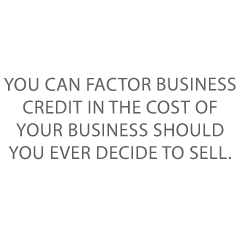 Experian offers data and analytics to businesses to help them better gauge risk. They have a massive consumer and commercial database for checking risk. They have found that blended data and reports work a lot better for them. For troubled businesses, blended scores dropped an average of 30% over the four quarters leading up to a bad event. But the owner’s consumer scores showed no statistically significant decline during the same period. Their best known and most widely used score is Intelliscore Plus℠, a percentile score.
Experian offers data and analytics to businesses to help them better gauge risk. They have a massive consumer and commercial database for checking risk. They have found that blended data and reports work a lot better for them. For troubled businesses, blended scores dropped an average of 30% over the four quarters leading up to a bad event. But the owner’s consumer scores showed no statistically significant decline during the same period. Their best known and most widely used score is Intelliscore Plus℠, a percentile score.
A Typical Experian Business Credit Advantage SM Report
Experian provides a sample report where you can get an idea of what to expect. The best, most accurate and up to date source for this information is the Experian website itself.
Business Background Information
The first part of a report contains:
- Basic details like business name, address, and main phone number
- Experian BIN (Experian’s BIN is like Dun & Bradstreet’s D-U-N-S number. It’s a unique identifier for each business in the database)
- Annual sales
- Business type (corporation, etc.)
- Date Experian file established
- Years in business
- Total number of employees
- Incorporation date and state
Experian Business Credit Score
Business Credit Scores run 1—100; higher scores mean lower risk. This score predicts the chance of serious credit delinquencies in the next 12 months. It uses tradeline and collections data, public filings as well as other variables to predict future risk.
Key Score Factors:
- Number of commercial accts with terms other than Net 1—30 days
- The number of commercial accounts that are not current
- Number of commercial accounts with high utilization
- Length of time on Experian’s file
Experian Financial Stability Risk Rating
Financial Stability Risk Ratings run 1—5; lower ratings mean lower risk. A rating of 1 means a 0.55% potential risk of severe financial distress in the next 12 months. Experian categorizes all businesses to fit within one of the five risk segments. This rating predicts the chance of payment default and/or bankruptcy in the next 12 months.
This rating uses tradeline and collections info, public filings, and other variables to predict future risk. Key Rating Factors:
- Number of active commercial accounts
- Risk associated with the business type
- Risk associated with the company’s industry sector
- Employee size of business
Credit Summary
This section contains several counts of various data points. For the most part, details are available further in the report. The info contains:
- Current Days Beyond Terms (DBT)
- Predicted DBT for a particular date
- Average industry DBT
- Payment Trend Indicator (stable, or not)
This sector also contains:
- Number of payment tradelines
- Number of lender consortium experiences
- The number of business inquiries
- Number of UCC Filings, bankruptcies, and liens
The last part of this section shows:
- Number of judgments filed
- Number of accounts in collections
- Company background (includes founding date, where headquarters are, and what your business does)
Payment Trend Summary
This section shows your company versus your industry on:
- Monthly payment trends
- Quarterly payment trends
These are the percentages of on-time payments by month and quarter.
Trade Payment Information
This next part shows details on payment experiences (financial trades). There is also data on:
- Lender consortium experiences (financial exchange trades)
- Tradeline experiences (continuous trades)
- Aged trades and payment trend detail
There is also a link to send any missing payment experiences.
Inquiries, Collection Filings, and Collections Summary
The Inquiries part has the industry making the inquiry and a total made during a given month. The Collection Filings sector has the date, name of the agency, and status (open or closed). If a collection is closed, the Collection Filing sector also has the closing date. The Collections Summary shows: status, number of collections, dollar amount in dispute, and amount collected (even if $0).
Commercial Banking, Insurance, Leasing
For leasing, this section shows:
- Leasing institution name and address
- Product type and lease start date and term
- Original and remaining balances
- The scheduled amount due
- The number of payments per year
- And the number of payments which are current, late, or overdue
Judgement Filings
This sector shows:
- Date and plaintiff
- Filing location
- Legal type and action
- Document number
- Liability amount
It also includes cases where your company in the report is the plaintiff or the defendant.
Tax Lien Filings
This part has:
- Date and owner
- Filing location
- Legal type and action
- Document number
- Liability amount and description
UCC Filings
This section has:
- Date and filing number
- Jurisdiction
- Secured party
- Activity (filed, or not)
UCC Filings Summary
This part shows:
- Filing period
- Number of cautionary filings
- Total filed, released, or continued
- Amended/Assigned
Cautionary UCC Filings include one or more of the following collateral:
- Accounts
- Accounts receivable
- Contracts
- Hereafter acquired property
- Leases
- Notes receivable, or
- Proceeds
But the Experian Business Credit Advantage SM Report does not have Intelliscore Plus℠. And it does not have the Experian Finance Stability Risk Score.
Experian’s Intelliscore Plus℠
It is a highly predictive score. This score provides detailed and accurate data on your business’s risk. It blends commercial data and consumer data on you, the business owner or guarantor. Reports include trades, legal filings, and more. Business credit scores run 0—100; 0 represents a high risk.
This score shows the percentage of businesses scoring higher or lower than yours. Many large financial institutions use it. So do over half of the top 25 P&C insurers and most major telecommunications and utility firms. Industry leaders in transportation, manufacturing, and technology also use Intelliscore Plus as their main risk indicating model. It has more than 800 aggregates or factors affecting business credit scores. Experian checks the scores of the millions of businesses in their database.
The Experian Financial Stability Risk Score (FSR)
FSR predicts the potential of your business going bankrupt or defaulting on obligations. The score finds highest risk businesses by using payment and public records which include:
- Severely delinquent payments of 61+ and 91+ days
- High utilization of credit lines
- Tax liens
- Judgments
- Collection accounts
- Industry risk
- Short time in business, etc.
FSR shows a 1—100 percentile score, plus a 1—5 risk class. The risk class puts businesses into risk categories. The highest risk is in the lowest 10% of accounts. A score of 66—100 and a risk class of 1 means a low risk of default or bankruptcy. But a score of 1—3 and a risk class of 5 means your business has a high risk of default or bankruptcy.
Time to look at Equifax.
#3 Way a 2021 Credit Review Can Benefit Small Businesses: Understand Your Equifax Business Credit Report Better than You Ever Have
You can get a sample Equifax business credit report online. The company gets its data through a data sharing agreement with the Small Business Exchange. And it uses Net 30 type industry trade credit info.
Equifax Business Credit Reports
Equifax will combine financial data with industry trade credit data and add in:
- Utility and telephone data
- Public record information (bankruptcies, judgments, and tax liens)
Company Identifying Information
The first section shows identifying info, like business name, and address and telephone number. This section will also include your Equifax ID. An Equifax ID is how Equifax can tell your business from similarly-named businesses.
Credit Risk Score
This score runs 101—992. Higher numbers are better. This section also shows key factors. These are positives and negatives about your business. Such as the age of your oldest account, if you have any charge-offs, and the size of your business.
Credit Utilization
This pie chart shows which percent of your available credit line you are using. It also has labels to show how much each percentage is. It is only for your financial accounts.
Payment Index
This score runs 0—100. Higher numbers are better. It also shows Industry Median.
- 90+ means paid as agreed
- 1—19 means 120 or more days overdue
Days Beyond Terms
This is a line graph of the average days beyond terms by date reported. It is for nonfinancial accounts only. Plus it shows any recent trends. So if you’ve improved your payment habits, it shows up here.
Business Failure Score/Inquiries
The score runs 1000—1880. It shows key factors like recent balances. The section on inquiries shows the date, and if it was an inquiry on a financial or nonfinancial account.
Bureau Messages
This part seems to be a free form field. Its purpose is to add notes to your profile. These can be notes on the number of your locations, or any business aliases.
Bureau Summary Data
This section shows:
- The number of financial and nonfinancial accounts
- Date the credit became active
- Number of charge offs and total dollars past due
- Most severe status in 24 months
- Single highest credit extended
- Total current card exposure
- Median balance and average open balance
It also shows Recent Activity, which includes:
- The number of accounts delinquent
- New accounts opened
- Inquiries and
- Accounts updated
Public Records
This section has:
Type Status:
- Bankruptcy
- Judgments, whether satisfied or not
- Liens filed and opened, or released
- Number, dollar, and most recent date filed
If there are none reported, then the date field will show that.
Additional Information
The final section appears to contain miscellaneous information, like:
- Alternate Company Names and DBAs
- Owners and Guarantor Names (name, type, date reported)
- Business and Guarantor Comments (seems to be another freeform field) and
- Report Details (the date of the report)
#2 Way a 2021 Credit Review Can Benefit Small Businesses: You Can do a 2021 Credit Review on Your Own
Checking your business credit reports in depth is the way to go to do your own credit review. But how do you know if there’s an issue you need to address? The answer is business credit monitoring. Each of the business CRAs has their own plan(s).
D&B Business Credit Monitoring
Pricing is current to September of 2021.
Use D&B Credit Monitor to check your report. It costs $39/month. View recent scores and ratings and benchmark your business versus your industry. It also alerts you to special events like suits, liens, and judgments. It includes dark web monitoring. This means it scans the dark web to help protect your business from possible fraud.
Experian Business Credit Monitoring
Prices are current as of September 2021.
- Business Credit Advantage: $189/year, monitor business credit for 1 year, alerts of changes
- Business Credit Score Pro: $1995/year with trade details or $1495/year in summary form only, get access to several business credit reports
- Profile Plus: $49.95 for a single report
- Credit Score Report: $39.95 credit summary report with score
Experian Subscription Plans: The Business Credit Advantage Subscription Plan
This is just one report including nearly everything Experian offers. This includes:
- Business Credit Score (Intelliscore)
- Financial Stability Risk Rating
- Collections and trade payment details
Experian Subscription Plans: The Business Credit Score Pro Subscription Plan
Get 30 reports per month. This plan does not include:
- Alert Emails & Monitoring
- Dispute Resolution Status Alerts
- 3 Month Score Trend
- Unlimited Access to Your Report
- Business Identity Monitoring
Experian Subscription Plans: The Business Credit Score Pro Subscription Plan (Enhanced Version)
Experian also offers an enhanced version of this plan. Get more info, including:
- Trade payment detail
- UCC detail
- Inquiry detail
Currently costs $1,495 per year.
Experian Reports: The Profile Plus Report
Get everything in the Business Credit Score Pro Subscription Plan. Plus (optional with the more expensive report):
- Trade Payment Detail
- Inquiry Detail
- UCC Detail
- Corporate Financial Information
Experian Reports: The Credit Score Report
Get everything in the Business Credit Score Pro Subscription Plan, but no optional sections. This one is like a one-time version of the Business Credit Score Pro Subscription Plan. You can use it to decide if you want to subscribe to the more expensive plan.
Equifax Business Credit Monitoring
These prices are current to September 2021. These reports include credit summary, and payment trends and public records. So the idea is to help you identify potential risk of late payments and business failure. Order a single Business Credit Report for $99.95. Or order a Business Credit Report multipack (5 for the price of 4) for $399.95.
Tips for Maintaining Good Credit after Your 2021 Credit Review
Pay your bills on time! It’s the most effective and fastest way to raise and maintain good business credit scores. You should also dispute any material inaccuracies in your reports. Inaccuracies are material (important) if they’re dragging down your scores.
Disputing Issues with Your Reports
The business CRAs will not change your scores without proof. They are starting to accept more online disputes. Include proofs of payment with it. These are documents like receipts and cancelled checks. Be specific about the concerns with your report.
#1 Way a 2021 Credit Review Can Benefit Small Businesses: Monitor Business Credit at D&B, Experian, and Equifax for Less
But all these reports are expensive! You could spend HUNDREDS of dollars trying to keep up with reports from all three of the big business CRAs. But… Did YOU know you can get business credit monitoring for all 3 big business CRAs in one place—for less? Credit Suite offers monitoring through its Business Finance Suite (through Nav). See what credit issuers and lenders see. So you can improve your scores and get the business credit and funding you need.
Your 2021 Credit Review: Takeaways
So there are many reasons to review your business credit reports and understand them.
Business CRAs D&B, Experian, and Equifax all provide reports on businesses like yours. They tend to tap similar info and draw somewhat similar conclusions. Paying on time will help your scores more than anything else. And monitoring your reports will help you find errors fast, before they can do a lot of damage. Monitor with Credit Suite for a lot less than if you monitored your reports and scores at each business CRA.
What’s YOUR business’s biggest benefit from doing a 2021 credit review?
The post 5 Ways Small Businesses Can Benefit from a 2021 Credit Review appeared first on Credit Suite.
